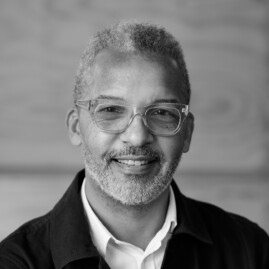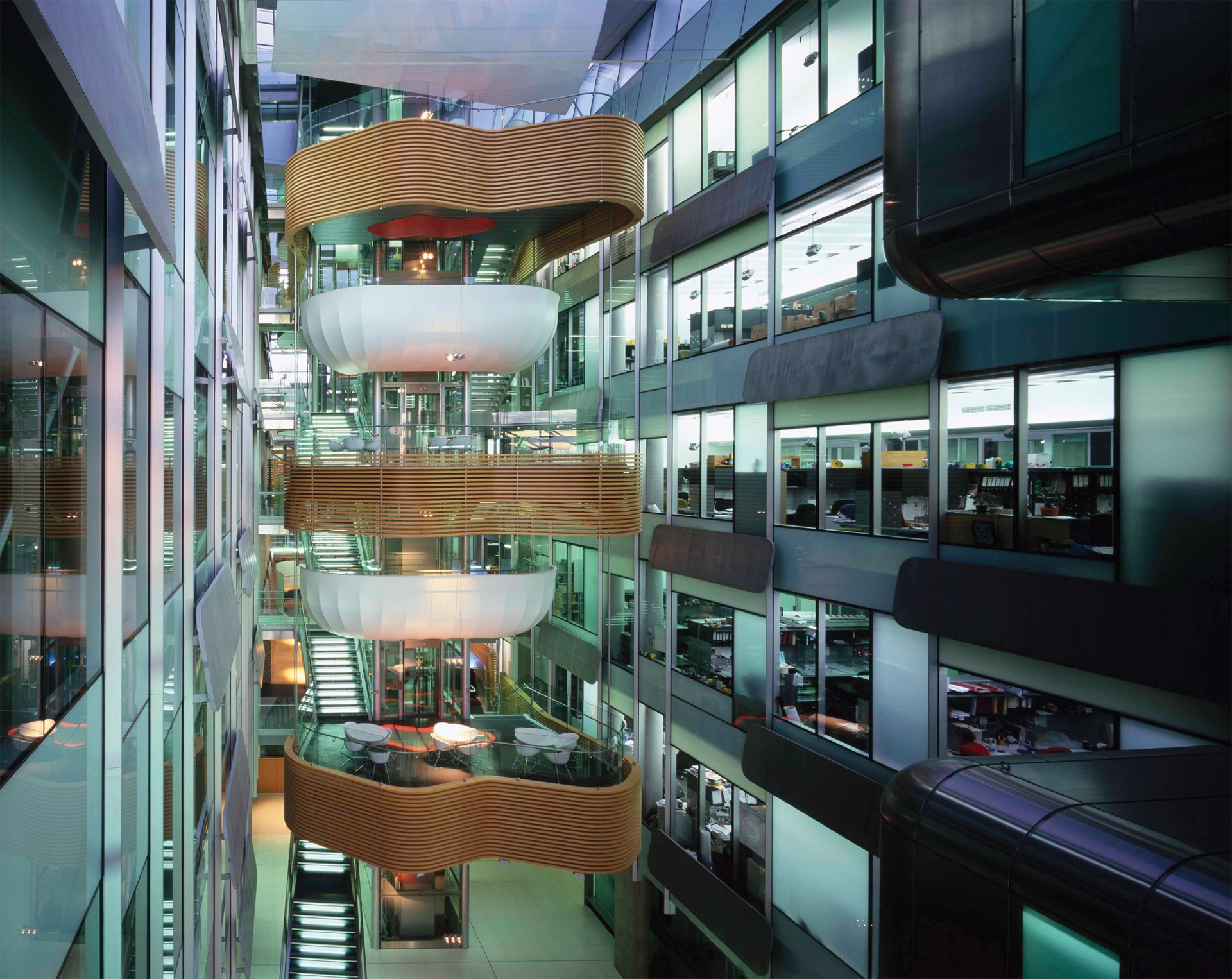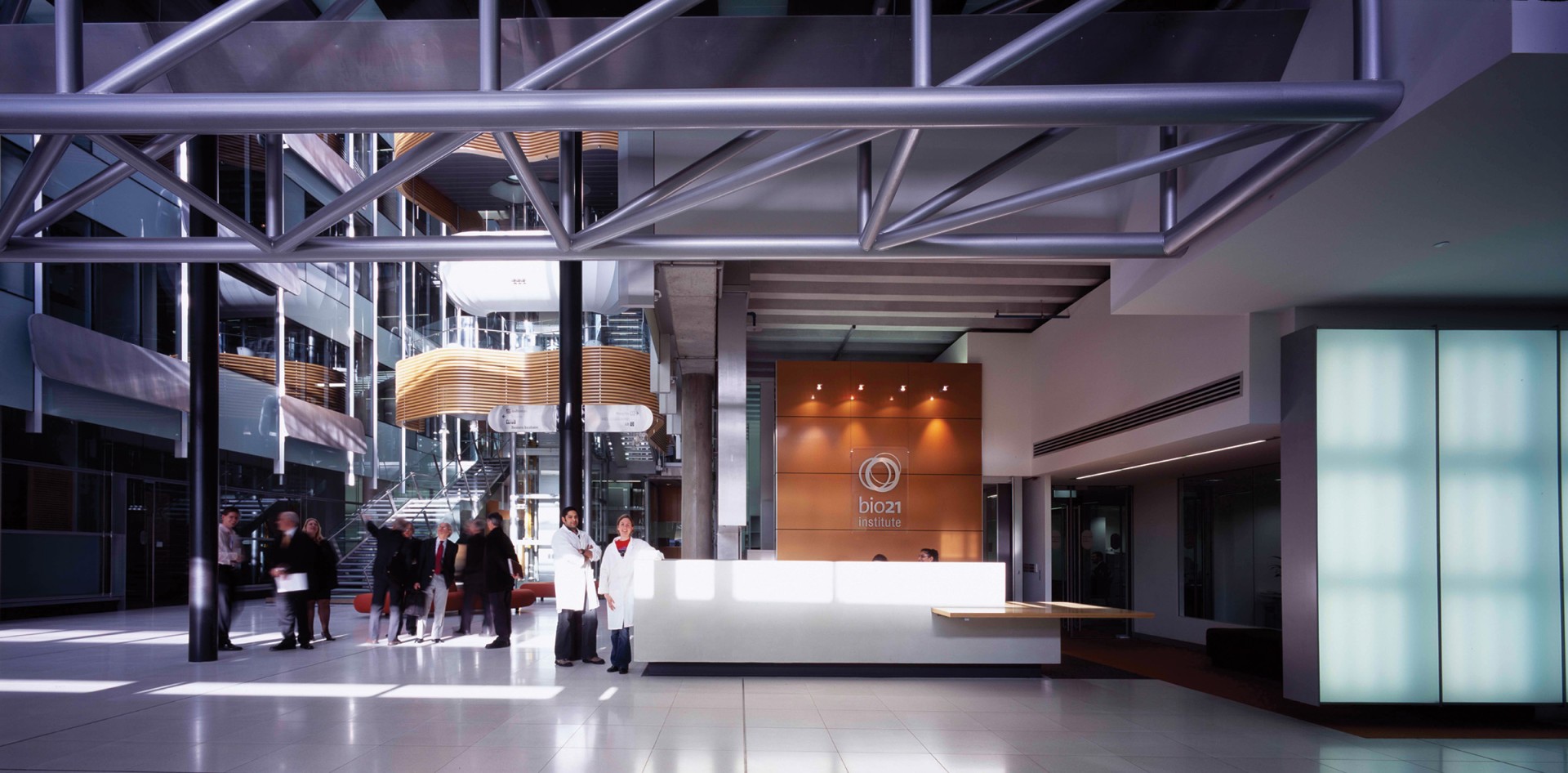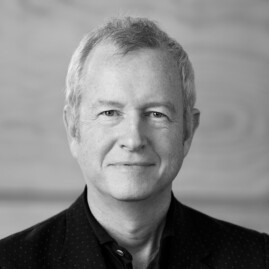
Christon Smith
VIC Architect Registration No. 16069

Redefining research and laboratory design, Bio21 takes the metaphor of the cell and its nucleus, as its architectural expression, interpreting it throughout so the form, literally follows function. Bringing together the University of Melbourne, the Walter and Eliza Hall Institute of Medical Research and the Royal Melbourne Hospital (Melbourne Health), it is one of Australia’s largest centres of research and commercial activity.
Two buildings of research laboratories, support and office spaces form the core of the centre, with all other components built, hung, passing through or linking into the laboratory blocks. Joining the buildings is a seven-storey, naturally ventilated atrium. Literally the heart of the centre, the atrium houses the main entry, reception and display area, and it is here that the cellular metaphor is most potently experienced.
Research scientists and their laboratories are celebrated through the visibility of spaces throughout the precinct. Creativity is encouraged through creation of opportunities for the collisions of scientific minds.
Stephen Webb
Design Director, Melbourne
Stainless steel pods (support spaces of differing sizes), hang vertically in the atrium, bouncing daylight around the space, and connecting via bridges (like arteries) to laboratories and other areas, with timber screens along the bridges balancing the effect. A technologically sophisticated system of glazing and shading across all the facades, the atrium roof and throughout the interior illuminate the building beautifully, and celebrate (with transparency) its research activities.
Site constraints dictated a south-east to north-west building orientation, requiring individual facade treatments to promote good passive solar design. A family of related facades was designed to modulate the daylight, wind and glare in varying ways, with each facade responding specifically to its orientation.
The Flemington Road facade has macro- and micro-shade louvres for solar control in the laboratory zone, wired in tandem with silk-screen printed facade panels help control glare. On the north-east facade, deep cantilevered shades modulate the facade and shade the laboratories from midmorning onwards. The simple aluminium shade also acts as a maintenance gantry. The south-east and north-west atrium end walls are fully glazed with performance clear glazing to maximise daylight, with vertical blinds to the north-west for use when needed.
In the circulation zones, a feeling of relaxed informality is created with fabrics, timber and ply providing an organic contrast to the gleaming metal surfaces.
Peter Hyatt
Author and photographer


VIC Architect Registration No. 16069

VIC Architect Registration No. 15145

VIC Architect Registration No. 15654

VIC Architect Registration No. 17039

VIC Architect Registration No. 17959